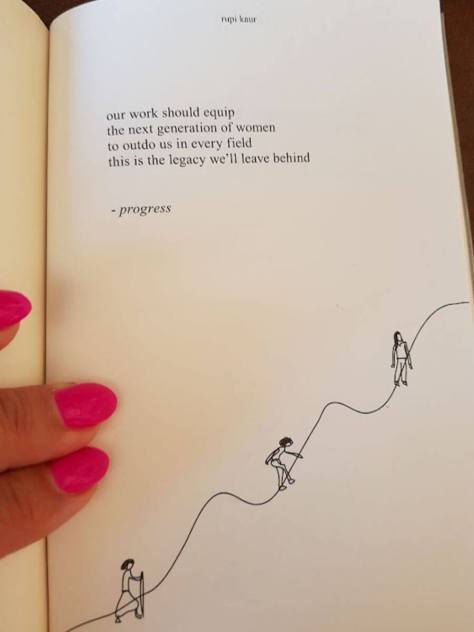Estimated reading time: 12 minutes
Discover how simple advice helps you move from suffering to surrendering. Understand how acceptance, positivity, and gratitude lead you to personal growth and a more fulfilling life.
This blog post is about how I learned to shift my mindset from suffering to surrendering.
Table of contents
Surrendering to Life’s Difficulties
Learning to surrender in personal development helps us cope with life’s difficulties, especially when we feel overwhelmed or out of control.
The process involves accepting what is beyond our power, allowing ourselves time and space to grieve and heal, and ultimately growing from the experience and developing more trust in life.
Surrendering when life gets difficult doesn’t mean giving up. Instead, it’s about taking a step back and accepting your circumstances with humility and understanding.
By surrendering, you’ll be able to take the burden off your shoulders and rely on something greater than yourself to get through whatever difficulties you’re facing.
A Pathway to Self-Love from Suffering to Surrendering
We all experience times of suffering in our lives. Sometimes, suffering is inevitable. Continuing to suffer is a choice.
After radically changing my life in February 2018, my family and I suffered. Blowing up my life and living in the ashes sent me spiraling into an identity crisis, and negative self-talk triggered low self-esteem.
I suffered because of a lack of confidence in my choices and constantly questioned myself. I longed to feel good in my own skin while fighting to hang on to what I used to be, not fully aware of what I wanted to become. It was a difficult time all around.
Mother’s Day Gift

On Mother’s Day, my youngest daughter bought me a beautiful coffee mug. Although we were living with the consequences of my choices, she was proud of me for the changes I made and supported my decisions.
The logo on the mug says, ‘TOTALLY the best teacher ever!’ with a gold embossed heart. When she gave me the mug, she told me she was sad for the people most affected by my decisions but proud of me for choosing to live the life I wanted.
She said I am her best teacher, and she is happy for me and loves me.
We then spent the day doing a home beauty day with candles. We indulged in face masks and pedicures, drank pots of tea, enjoyed homemade chocolate-covered strawberries, and read poetry about empowering women.
Given our circumstances, we had a wonderful day together in complete awe and appreciation of each other.
The shared moments during that single day in 2018 left me looking in the bathroom mirror in a state of appreciation for the hard work I faced in the coming months.

Fast forward to December 30th, 2022, I was standing in my kitchen washing the coffee mug. It slipped from my hands, hit the side of the sink, and cracked. I immediately picked it up and filled it with water to test if it leaked. Instead, the water leaked out from the point of impact along the side to the bottom. I was devastated.
Truth be told, I’ve spent several years focusing on decluttering the things from my life that no longer serve me or create value. I held onto this mug, and it served me well. Every morning it felt like a warm hug from my daughter.
Life Lesson
At the very moment it broke, I burst into tears. My partner rushed into the kitchen, not knowing if I had hurt myself or what had happened. I showed him the mug, and he let out a deep sigh, ‘oh no,’ and consoled me. I was grieving and felt the pain of suffering at the soul level. After collecting myself, I realized the source of my grief.
It was just a mug, but it represented a time in my life when there was immense suffering with moments of joy. We struggled and suffered when my daughter scraped and saved to purchase this mug for me from her part-time earnings. At this time in our lives, all our earnings went from hand to mouth. She made sacrifices to give me this gift.
Reflection
Looking back, I saw myself at that time in my life. My mental well-being crumbled, low self-esteem haunted me, and I longed for a better life with strong foundations.
Four years later, standing in the kitchen holding the broken mug, my initial grief was about everything in our lives when I received the mug and the following events. After a few minutes, the tears of sorrow turned to tears of joy once I realized where I was in life and what it took to get me here.
I no longer suffered as I had back then. I felt joy for my own journey I took to self-discovery and the important lessons I learned about the importance of self-love. Today, I understand the importance of self-care, connecting with my authentic self, and love.
After my daughter and I spent the best Mother’s Day together, I realized I was stuck in a cycle of suffering. I needed a different way with simple steps to face the challenges ahead. My family had become settled and secure, so it felt like the right time to let go and discover new things to embark on a journey to self-love, release the suffering, and embrace moments of joy.
This decision was echoed by something as simple as a mug, reminding me of the importance of surrendering and no longer struggling. More importantly, affirming that surrendering, like suffering, is a choice. I am grateful.
How to Stop Suffering and Live a Joyful Life
Suffering is an inevitable part of life, but it doesn’t have to define you. Changing your mindset, learning healthy coping skills, practicing self-care and mindfulness, connecting with supportive people, and taking action toward positive changes helps you break free from suffering and start living a more joyful life.
A Path to Stop Suffering: How to Make Different Choices
Are you struggling to love yourself, trusting your authentic power and self-expression? It’s time to recognize, accept, and nurture the unique gifts you bring to the world!
Embark on a self-love journey and learn how to access the strength within to help you surrender suffering and reclaim confidence in your own capability.
These are the steps I took when starting my journey to stop suffering and start surrendering:
- Recognizing your feelings and acknowledging your power to heal.
- Practicing self-compassion and opening yourself up to love.
- Learning to recognize unhealthy patterns causing suffering.
- Shifting from resistance to surrender by becoming vulnerable.
Recognize Your Feelings and Acknowledge Your Power to Heal
Start by recognizing your feelings and acknowledging you have the power to heal yourself. Then, focus on taking care of your own needs while cultivating your true strengths to live an inspired life.
Take time for self-reflection, tuning into yourself, and becoming aware of how you feel in your body and mind. Ask questions to help you better understand yourself and explore any underlying beliefs or patterns blocking your path to real self-love.
These are some of my favorite ways to engage in activities to help you create meaning in your life:
- Taking care of your physical needs.
- Practicing gratitude for the good in your life.
- Setting boundaries for yourself.
- Discover meaningful ways to give back or support others.
Practice Self-Compassion and Open Yourself Up to Love
When we are on the path to self-love, we must practice self-compassion. Self-compassion is an important part of your mental health and mental well-being. This means cutting yourself some slack and understanding that your mistakes do not define you.
Show kindness towards yourself by being gentle with yourself when moving forward and strive to nurture yourself through difficult emotions.
Open yourself up to receiving love and support from others and be willing to accept compliments and help. Additionally, practicing self-care activities with a little thing each day, like listening to music, reading a book, taking a warm bath, or going for a walk, helps you feel relaxed and grounded.
When taking care of your own needs becomes a priority in your busy schedule, the trajectory of your life will change.
A daily practice of meditation or journaling is an excellent way to practice self-love. Spend some time each day focusing on positive affirmations and reminding yourself of all the good things in your life.

It’s easy to get caught up in negative and destructive thinking. But by showing yourself compassion and doing activities that bring joy, you cultivate a strong sense of self-love, unconditional love, and appreciation.
You learn to make better choices for yourself and your well-being.
Self-care is key and helps build self-love. Here are tips for self-love inspiration:
- Be gentle when approaching each individual step while still challenging and pushing yourself.
- Investing time into ourselves is one of the best gifts we can give ourselves and those we love.
- Honor who you are when pursuing a pathway toward compassion, understanding, empowerment, and self-love.
All these steps are beneficial towards cultivating self-love and helping you to understand you are worthy of love and respect.
Learn to Recognize Unhealthy Patterns that Cause Suffering
A crucial step in your path to self-love is recognizing and understanding any patterns, habits, or beliefs that keep you stuck in the cycle of suffering. These unhealthy patterns get in the way of having a healthy relationship with ourselves and others.
Unhealthy patterns cause us to feel anxious, overwhelmed and disconnected from ourselves. As a first step to regaining control of our lives, we must learn how to recognize these patterns and replace them with positive, uplifting beliefs that promote healthy self-care.
Practicing mindful meditation and visualization techniques helps reduce stress and reconnect us with our inner strength.

To help identify any unhealthy patterns, journaling is a great tool. Take time each day to note and reflect on any thoughts, feelings, and behaviors that cause discomfort.
With regular practice, you’ll become more aware of how these negative habits arise in your daily life, allowing you to take proactive steps to challenge them.
By learning how to recognize these patterns that keep us from feeling happy and fulfilled in our lives, we lay the groundwork for building an enduring relationship with ourselves and others based on kindness and love.
This post explores a process to transition from a fixed mindset to a growth mindset:
How to Transform Your Fixed Mindset into a Growth Mindset
Shifting from Resistance to Surrendering by Becoming Vulnerable
The process of shifting from resistance to surrendering begins by becoming willing to be vulnerable and letting go of the need to control everything in our lives.
Accepting that there will be times of suffering, pain, and uncertainty without trying to push away or ignore it allows us to open up more deeply to ourselves and invites a greater level of self-compassion.
Becoming familiar with our own vulnerability helps us recognize it in others and can help forge powerful, compassionate relationships with those around us.
Learning how to make space for joy and sorrow and recognizing that we can be strong even when we’re weak gives us the permission to experience greater self-love. It allows us to simultaneously accept our seemingly contradictory emotions while helping us allow love into our lives.
On a spiritual level, becoming vulnerable helps us recognize that there is a bigger source of love in the Universe beyond what we can give ourselves alone.
This blog post shares my story about re-discovering myself and how I started my self-care journey:
How Powerful Life Lessons Transformed Me from Wounded Healer to Spiritual Warrior
Summary
It might feel like there’s no end in sight if you’re having a hard time. But it is possible to overcome your suffering and move forward.
To shift your mindset from suffering to surrendering involves accepting your current situation and embracing positive thoughts. Embarking on a journey to self-love and gratefulness.
With these steps, you will transition from struggling to surrendering.
Thanks for stopping by!
Until next time,
Suzanne























You must be logged in to post a comment.